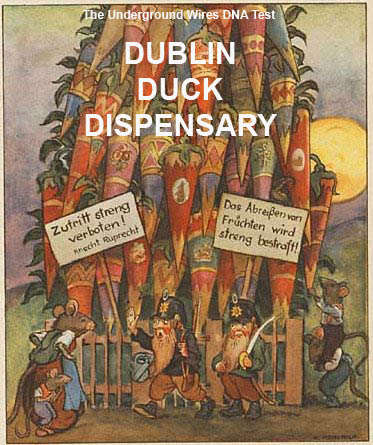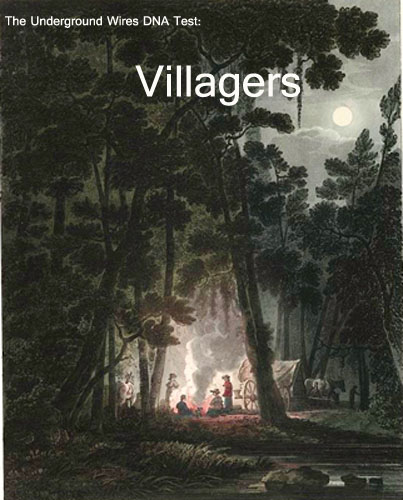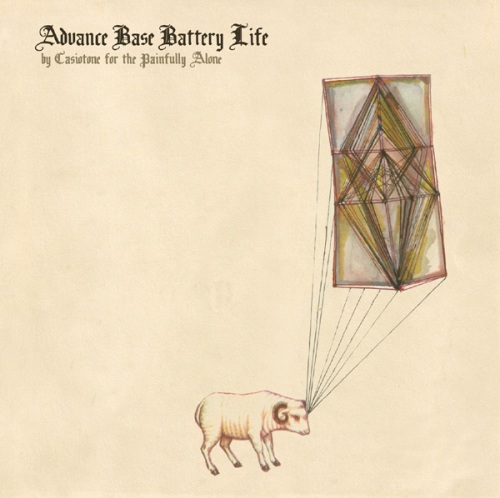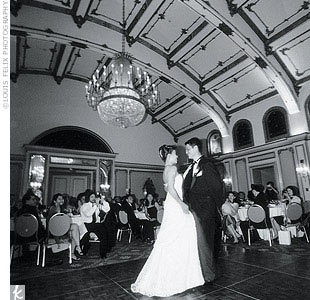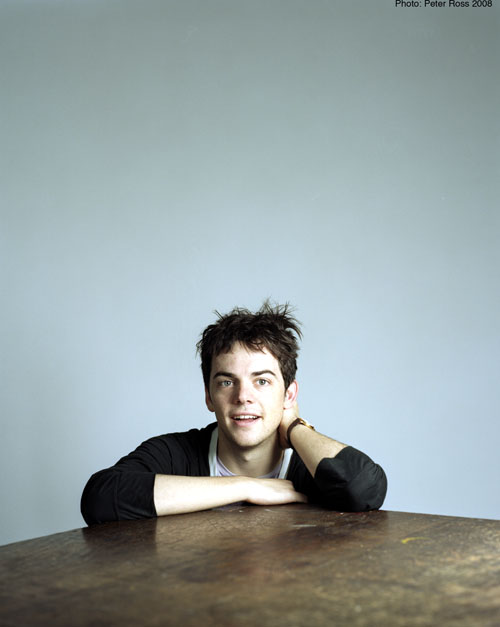
A straight rip from the forthcoming TD, with a tiny preface: Nico Muhly’s music is in the same school of inspiration that Steve Reich’s back catalogue graduated from, and it’s well on the way to achieving first class honours. Check out any of his thoroughly beautiful bits/bobs wherever you can find them.
It’s the journalistic requisite to list off the Talmud-length CV of Nico Muhly when introducing him to friends, readers, and innocent bystanders. Take your pick: his eclectic, venerable albums Speaks Volumes and Mothertongue, the shiver-inducing soundtrack to The Reader, arrangements for Bjork, Antony and the Johnsons and Grizzly Bear, a blog chockful of New Yorker-worthy articles, his status as the most exciting American composer in decades, the possessor of a fine clump of hair. Muhly plays his first Dublin show at the out-going Spiegeltent at this year’s Fringe, our tip as the festival’s crowning achievement.
I’m Youtube skimming like a true lazy journalist… You were just on my screen talking about the concept of portable music as a New Year’s resolution. How’s that working out?
It’s been pretty great, actually. I’m writing a lot of music for my friend Nadia Sirota, who will join me in Dublin — a bunch of shorter, easy-to-travel with pieces. Now, of course, as I say this, I’m writing an opera, which is the least portable thing ever. So it’s about balance for the New Year!
The Pittsburgh Post-Gazette is sitting in front of me now declaring “The musical concept of the composer is nearly dead”. This seems quite bold. Where do you stand on this?
Well, first of all, I am mystified as to how you have a copy of a magazine from Pittsburgh in Ireland.
Me too.
That sounds like one of those indefensible statements that people “involved in culture” love to utter. Surely that sentence could have been written by depressed journalists in 1890, 1920, 1950, etc? Anytime you read a sentence about classical music with the formula “_______ is dead” it’s almost always written by some kind of revolutionary or reactionary or crazy person. My response to this — and really to most meta-figurations about music — is to put my fingers in my ears and apply myself to the business of continuing to write good music.
In your recent blog post about minimalism you mentioned the near-rock credentials of minimalist and post-minimalist composers – How people attend Phillip Glass shows like rock concerts. As a figure with a foot firmly in the contemporary rock/indie world do you see any convergence between the indie universe and the avant-garde, minimalist, classical world? You can hear a definite similarity in aesthetic and approach between what, say, Animal Collective are doing and what Steve Reich and Terry Riley initiated. Even if it has taken 40 years to filter down.
I see a convergence, but I don’t think it’s new. I think people in their 40’s and 50’s and even 60’s were listening to, you know, Bob Dylan and Steve Reich happily together way back when. But, I think the reason for this now is that classical music exists in a the same commercial space as other, non-classical musics, experimental or not. The iTunes store is the best example of this — you can laterally transfer from, say, my music to the new Grizzly Bear album without having to physically haul your body into a closed room devoted to classical music in the store.
I was talking to a friend last night about musical comfort zones, and the importance of forcing yourself to listen outside of the familiar – you’re liable to learn a whole lot more listening to very bad ragga that you’ve never heard before than slightly different permutations of what you’re used to. Do you think you confine yourself to a comfort zone? Do you take influence from outside of what would be considered experimental or avant-garde music?
How interesting — this is a good question. Now. My comfort zone is actually very different from experimental and avant garde music. My comfort zone is 16th and 17th century English choral music, and classical American minimalism, which is to say, Philip Glass Music in 12 Parts or Reich Music for 18 Musicians. So that’s my sort of emotional ground zero. But my listening is voracious and very wide-ranging. Just while I’m writing this to you, I listened to some tidbits from “Nixon in China” and a bunch of Trina (she’s a ferocious hip hop artist from the south).
You’ve talked before about how your work doesn’t revolve around a core ideology – It’s strange that the criticism of current youth culture is its sort of irreligiosity and what might be dubbed as shallowness, but your music is almost cut from that same cloth and is praised for it. Do you think a sort of cultural atheism is the way forward for art and music?
Ha, interesting. Like I said before, I don’t worry about it too much — I would say that inasmuch as my work is shallow and concerned with surfaces and sort of making connections electrically, it also bears a sacred trace that comes from choral music. So I don’t know. Hard question.
I’m thinking of visiting Iceland next year. The country seems to have had an impact on you (Syllables, Bjork)… What’s the big attraction for you?
Oh it’s the best! I just love it. It’s beautiful, musical, severe, cold — it just resonates with me enormously. Everyone should absolutely visit it.
What are you planning for the Dublin show? Have you been in the city before?
I’m not sure what I’m planning! I’m going to do a bunch of energetic solo pieces, that’s for sure, and most likely “Wonders” from Mothertongue… I have never been to Ireland, and am hugely excited.
I’m still skimming… A Youtube commenter wants to know: “Is there ANYTHING you can’t do?”
I don’t know how to tie a bow tie.
